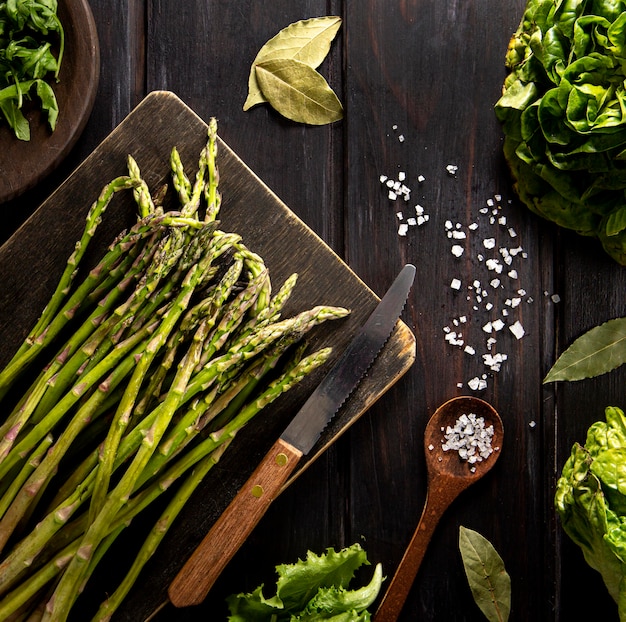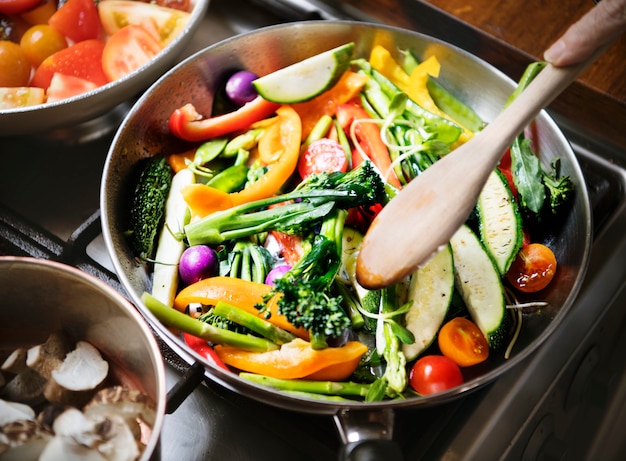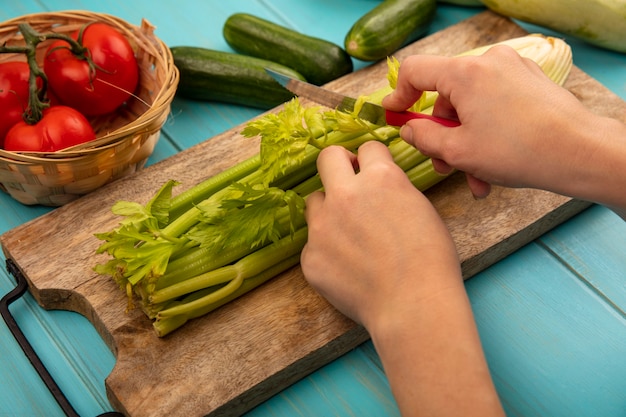Asparagus is a spring staple, and it's always a delight to see those bright green spears popping up at the market. But who has time for elaborate oven recipes when you're craving a delicious asparagus dish? That's where stovetop cooking comes in. It's all about quick, easy, and flavour-packed meals that don't require hours of prep. This is where I come in. I'm going to share my tried-and-true methods for whipping up fantastic asparagus dishes, from basic blanching to more adventurous flavour combinations. And trust me, these recipes are simple enough for even the most novice cook, but they're packed with flavour that will impress even the most discerning palate. So, grab your favourite pan, a bunch of asparagus, and get ready to create some magic. Let's dive in!
(Part 1) The Foundation: Mastering Asparagus Blanching

Before we get fancy, let's talk about the foundation of all good asparagus cooking: blanching. This simple technique helps retain those vibrant green hues and tender-crisp texture.
1. Preparing Your Asparagus
The first step is to give those spears a good wash. It's best to gently shake off any excess water before you start trimming. Now, here's the important part: trimming the woody ends. You'll find that most asparagus spears break easily at the point where the stalk becomes tough. Just snap it off, and you'll be left with a perfectly tender piece ready for cooking.You can trim your asparagus to any length, depending on your recipe and preference. I'm a big fan of those longer spears for a dramatic presentation, but shorter ones work great for salads or stir-fries.
2. The Blanching Process
Next, fill a large saucepan with water. Make sure you have enough to cover your asparagus spears. Now, bring the water to a rolling boil. While that's happening, fill a large bowl with ice water. This ice bath is crucial for stopping the cooking process and preserving the vibrant green colour. Once the water is boiling, carefully add your asparagus spears. If you have a lot of asparagus, you might need to do this in batches to prevent overcrowding the pot. Now, let them cook! You'll need to adjust the cooking time based on the thickness of the spears. For thin spears, 2 minutes might be enough, while thicker ones could take closer to 3 minutes. You want them to be tender but still have a slight crunch.When your asparagus reaches the desired texture, use a slotted spoon to remove it from the boiling water and immediately transfer it to the ice bath. Let it sit there for a couple of minutes to cool completely.
3. Finishing Touches
After the ice bath, remove your asparagus from the water and pat them dry. Now you have perfectly blanched asparagus that's ready to use. You can simply drizzle them with a little olive oil and salt for a simple side dish, or use them as a foundation for more elaborate dishes.
(Part 2) Beyond Basic Blanching: Elevate Your Asparagus Flavour

Now that you've mastered the basics, let's get creative with flavours. There are endless possibilities when it comes to transforming simple asparagus into a culinary masterpiece.
1. Garlic and Lemon: A Classic Combination
This combination is a classic for a reason: it's simply irresistible. The tangy lemon zest and the earthy fragrance of garlic are a perfect match for asparagus's delicate sweetness. To add a garlic and lemon twist to your asparagus, simply add a few minced garlic cloves to the boiling water while blanching. Once your asparagus is cooked and drained, toss them with a good glug of olive oil and a generous squeeze of fresh lemon juice. Season with salt and pepper to taste, and you've got a simple yet delicious side dish.
2. Spiced Up Asparagus: Adding a Touch of Heat
Feeling adventurous? Let's add some spice! You can use your favourite spice blend, whether it's chili flakes for a fiery kick, smoked paprika for a smoky depth, or a Moroccan spice mix for a complex, aromatic flavour. My go-to method is to add a teaspoon or two of my chosen spice to the boiling water along with the asparagus. Once they're cooked, I toss them with olive oil and a squeeze of lemon juice. A pinch of salt and pepper to finish, and voila!
3. Creamy Asparagus: Indulge in a Touch of Luxury
For a luxurious treat, try a creamy asparagus dish. This is where simplicity meets elegance. After blanching your asparagus, toss them with a dollop of crème fraiche, a touch of Dijon mustard, and some chopped fresh dill. Season liberally with salt and pepper, and you have a simple yet divine side dish.
(Part 3) asparagus stir-fry: A Quick and Healthy Meal

Let's get those woks sizzling! A stir-fry is a perfect way to enjoy asparagus with a vibrant mix of other veggies.
1. Stir-Fry Basics
Grab your favourite wok, or a large frying pan if you don't have one. Heat a tablespoon of oil over medium-high heat. The secret to a great stir-fry is quick cooking. You want your vegetables crisp-tender and bursting with flavour.
2. Building Your Stir-Fry
Start by adding your asparagus spears to the hot oil. Stir-fry them for 2-3 minutes, until they start to soften. Now, add your other chosen veggies - think sliced bell peppers, onions, mushrooms, snap peas, or whatever else you love. Keep stir-frying until everything is cooked through but still has a pleasant crunch.
3. Adding the Finishing Touches
For a basic stir-fry, a sprinkle of salt and pepper is all you need. But if you want to get a bit more creative, try adding a dash of soy sauce, oyster sauce, or hoisin sauce. You can also stir in some freshly grated ginger or minced garlic for a burst of flavour.
4. Serving Up Delight
Serve your stir-fry over rice, noodles, or even crusty bread. It's a satisfying and flavourful meal that's perfect for a quick weeknight dinner or a casual gathering.
(Part 4) asparagus soup: A Creamy and Comforting Dish
Looking for a comforting meal on a chilly day? Asparagus soup is a real winner, especially when you crave that warm, creamy feeling. It's a fantastic way to use up a bunch of asparagus, and it's surprisingly easy to make.
1. Soup Preparation
Start by chopping your asparagus spears into small pieces. You can either blanch them first or cook them directly in the soup pot. I usually give them a quick blanch for a couple of minutes to ensure they're fully cooked. Then, melt some butter or olive oil in a large pot and sauté a chopped onion until it's softened. Add a clove or two of minced garlic and let it simmer for a minute.
2. Adding the Asparagus
Now, add your chopped asparagus to the pot and cook for about 5 minutes. Pour in some vegetable broth, and bring the whole thing to a simmer. Let it simmer for about 15 minutes, or until the asparagus is truly tender.
3. Blending and Finishing
Once everything is cooked, use an immersion blender to blend the soup until it's smooth. You can also transfer the soup to a regular blender if you prefer. For a luxuriously creamy texture, add some milk or cream at the end. Season with salt and pepper to taste, and serve with a dollop of crème fraiche or a sprinkle of fresh chives.
(Part 5) asparagus pasta: A Quick and Delicious Meal
pasta dishes are always a crowd-pleaser, and asparagus is a fantastic addition. This is a versatile recipe that you can easily adapt to your own taste.
1. Pasta Preparation
First, get a pot of salted water boiling. Cook your pasta according to the package directions. While the pasta is cooking, get your asparagus ready. You can either blanch them for a few minutes for a softer texture or quickly sauté them in a pan with some garlic and olive oil.
2. The Sauce
Now, it's time to choose your sauce. I love a simple garlic and olive oil sauce with a squeeze of lemon. But you could also go for a creamy sauce with a touch of parmesan cheese, or if you're feeling adventurous, try a pesto sauce.
3. Putting It All Together
Once your pasta is cooked, drain it and transfer it to a large bowl. Add your sauce and toss to coat. Now, add your asparagus and stir everything together. Serve it up with grated parmesan cheese and a sprinkle of fresh parsley.
(Part 6) asparagus salad: Fresh and Light
Looking for a light and refreshing salad? Asparagus is a perfect addition to your next salad masterpiece.
1. Salad Essentials
Start with your favourite salad greens. I personally love baby spinach, arugula, or a simple mix of lettuce. Then, add some cherry tomatoes, sliced red onions, and crumbled feta cheese for a flavourful combination.
2. Adding Asparagus
Give your asparagus spears a quick blanch for a few minutes to retain their bright green colour and tender-crisp texture. Let them cool completely, and then toss them with your other salad ingredients.
3. The Dressing
Now, for the dressing. A simple vinaigrette made with olive oil, lemon juice, salt, and pepper is perfect. You can also add a touch of honey or Dijon mustard for a more complex flavour.
4. Presentation Matters
Arrange your salad beautifully on a platter or in individual bowls. A sprinkle of toasted pine nuts or fresh herbs can add a touch of elegance and enhance the flavour.
(Part 7) asparagus with eggs: A Hearty Breakfast or Brunch
Asparagus is a delightful addition to any breakfast or brunch spread. It adds a touch of spring freshness to your eggs.
1. Scrambled Asparagus Delight
scrambled eggs are a classic, and asparagus is a perfect match. Blanch your asparagus for a few minutes, then add it to your scrambled eggs along with some cheese and seasonings. Cheddar, mozzarella, or even goat cheese are great options.
2. asparagus omelette
For a more elegant breakfast, whip up an omelette. Sauté your asparagus in a pan with some butter or olive oil. Then, create your omelette, and add the asparagus to the filling. You can also add diced tomatoes, onions, or mushrooms for extra flavour and texture.
3. Asparagus and Egg Toast
Looking for a quick and easy breakfast? Toast some bread, spread it with a little butter, and top it with fried eggs and blanched asparagus spears. It's a simple yet satisfying way to start your day.
(Part 8) asparagus and fish: A Match Made in Heaven
Asparagus is an exceptional pairing for fish. The subtle sweetness of asparagus complements the delicate flavour of fish beautifully.
1. grilled asparagus and Fish
If you're firing up the grill, why not add asparagus to the mix? Grill your fish and asparagus together on the same grill. Salmon or cod are excellent choices, but you can use any fish you like.
2. Baked Asparagus and Fish
For a simpler option, try baking your asparagus and fish together in the oven. Place your fish on a baking sheet lined with parchment paper, then surround it with asparagus spears. Drizzle with olive oil, season with salt and pepper, and bake until the fish is cooked through and the asparagus is tender.
3. Asparagus and Fish Sauce
To elevate your fish dish, try making a simple asparagus sauce. Sauté some chopped asparagus in butter or olive oil, then add a little white wine and lemon juice. Simmer until the asparagus is tender and the sauce has thickened. Spoon the sauce over your fish and garnish with fresh parsley.
(Part 9) Storing and Using Leftover Asparagus
Don't let those lovely asparagus spears go to waste! Here's what you need to know about storing and using leftovers:
1. Storage Tips
For the best results, store your leftover asparagus in a plastic bag in the refrigerator. They'll stay fresh for about 3-4 days. Avoid storing them for too long, as they can lose their flavour and become tough.
2. Creative Leftover Ideas
Got some leftover asparagus? Don't just throw them in a salad! Here are some ideas to give them a new lease on life:
- Asparagus Fritatta: Whisk some eggs with milk, cheese, and seasonings, then add chopped leftover asparagus. Pour the mixture into a baking dish and bake until set. This makes a tasty and filling breakfast or lunch.
- Asparagus Quiche: Use leftover asparagus to create a delicious and satisfying quiche. Combine them with cheese, eggs, and a creamy base, then bake until golden brown. This is a great way to use up any remaining asparagus.
- Asparagus Pasta Salad: Toss leftover asparagus into a pasta salad for a refreshing and flavorful meal. Combine them with cooked pasta, vegetables, cheese, and your favorite dressing. You can also use it as a topping for pasta dishes.
- Asparagus Soup: While we already explored a soup recipe, leftover asparagus can be a great addition to a blended soup. Add it to your favorite soup recipe for an extra boost of flavour and nutrients.
- Asparagus Risotto: Leftover asparagus can be incorporated into a creamy risotto for a rich and flavorful dish. Add it towards the end of cooking time to retain its vibrant colour and delicate texture.
(Part 10) FAQs: Your Asparagus Questions Answered
Got some questions about asparagus? I've got you covered.
1. Can I eat the asparagus tip?
Yes, the tip of the asparagus is perfectly edible and often the most tender part! You can even find asparagus varieties specifically grown for their tips, sometimes called "spears" or "crown" asparagus. These tips are often thicker and more tender, making them a delicious treat.
2. How do I know if my asparagus is bad?
Look for asparagus that has a firm, crisp texture. If it feels limp or mushy, it's probably past its prime. You should also avoid asparagus with brown or discolored tips. A slightly earthy aroma is normal, but if it has a strong, unpleasant odor, that's a sign of spoilage. fresh asparagus should have a bright green colour and feel firm to the touch.
3. Can I eat the white asparagus?
Yes, absolutely! White asparagus is a different variety, grown underground and typically blanched. It has a milder flavour than green asparagus and is often enjoyed steamed or boiled. It's a popular delicacy in some regions. Look for firm, unblemished white asparagus when choosing.
4. Does asparagus make your pee smell funny?
This is a common question, and the answer is yes, asparagus can sometimes give your urine a distinctive odor. This is caused by a chemical compound called asparagusic acid. Not everyone produces this odor after eating asparagus, and the intensity can vary. It's not a cause for concern and is perfectly normal.
5. What are some healthy benefits of asparagus?
Asparagus is a nutrient-rich vegetable packed with vitamins, minerals, and antioxidants. It's a good source of vitamin K, folate, vitamin C, and fiber. It's also low in calories and fat. Regular consumption of asparagus may help support bone health, boost immunity, and promote digestive health.
(Part 11) Final Thoughts
Well, there you have it, my friends! A whole world of asparagus possibilities awaits you. I hope this guide has inspired you to get creative and explore the many delicious ways to enjoy this springtime treasure. So, grab your asparagus, get cooking, and let your taste buds sing! Happy asparagus adventures!
Everyone is watching

Corn on the Cob: The Ultimate Guide to Perfectly Cooked Ears
Healthy MealsAh, corn on the cob. Just the name evokes images of sunny days, barbecues, and that sweet, juicy flavour that ...

Perfect Pork Roast Oven Cooking Time: A Guide to Delicious Results
Healthy MealsThere's something truly satisfying about a perfectly roasted pork. The aroma alone is enough to make your mout...

Scallops: The Ultimate Guide to Perfect Cooking
Healthy MealsAh, scallops. Those delicate, sweet, and utterly delicious morsels of the sea. They hold a special place in my...

Ham Cooking Time: How Long to Bake, Smoke, or Boil a Delicious Ham
Healthy MealsAh, ham. It's a classic, isn't it? A real crowd-pleaser, especially around holidays. And when done right, it'...

Spaghetti Squash: The Ultimate Guide to Cooking and Serving
Healthy MealsRemember that time you saw spaghetti squash at the supermarket, looking all bumpy and strange, and thought, "W...
